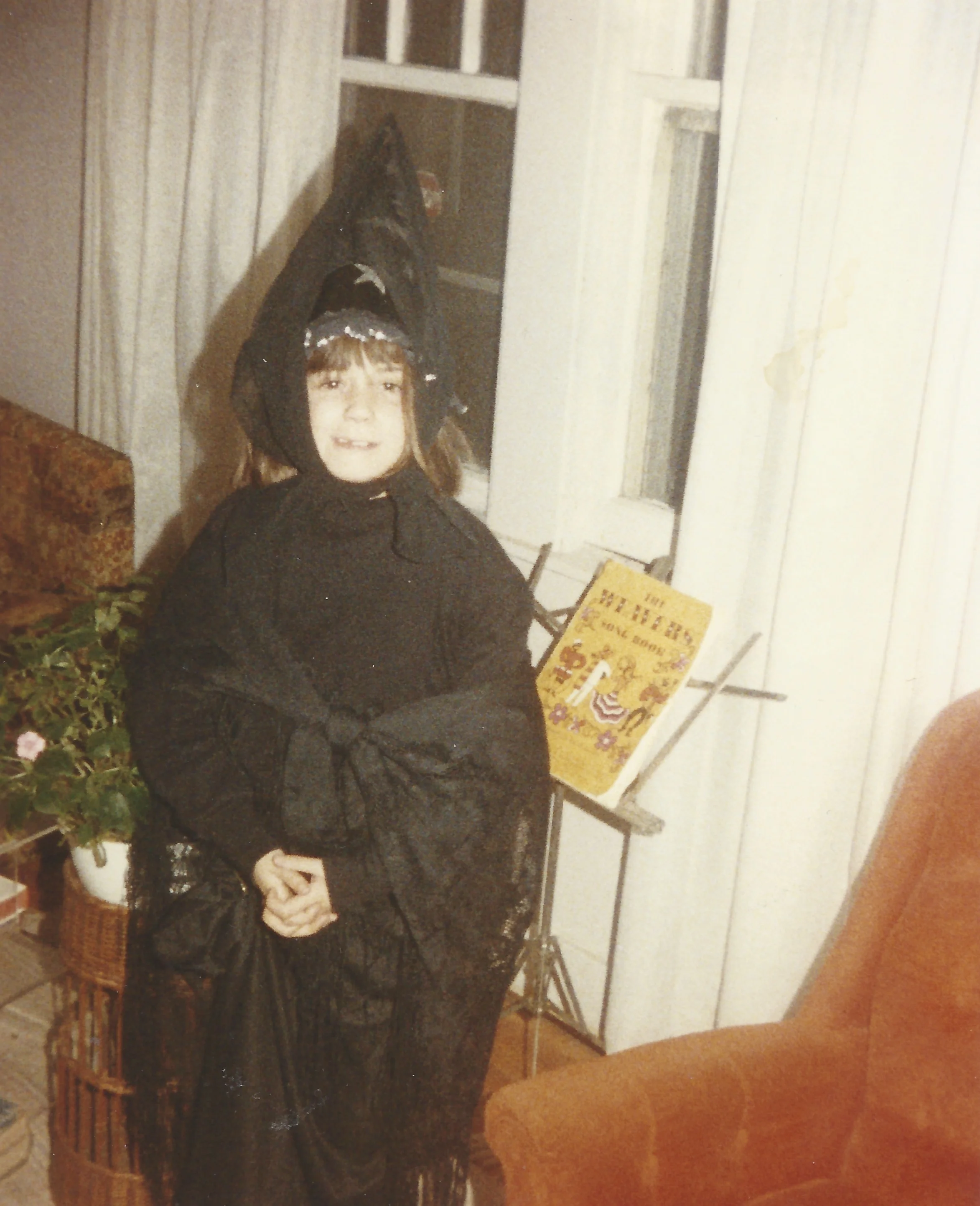What can be better than sitting around a campfire (or even just around a flashlight) and telling scary stories? It’s the time of year to dig into your spookiest memories.
The author ready for tricking and treating
Remember the old witch in your neighborhood with the long white hair, who sat on her porch casting spells at innocent children passing by? Or that story your camp counselors always told about the ghost ships? Or the time your friends blindfolded you and made you stick your hand into a bowl of “brains,” aka, spaghetti?
Take time this fall to share one of your own scary stories with a young and impressionable child in your life. Be sure to scare the bejesus out of ‘em and make them scream for more!
Some frights transcend time. Of course something that was scary in the past doesn’t always pack the same power to petrify these days. The key to a successful scary story is in the tone of your voice and the pacing of your story. Here are some tips for telling spooky stories to youngsters:
1. Start by brainstorming and write notes about scary stories that you remember from your childhood. You can also check here for some scary inspirations.
2. Check for age appropriate-ness. Scares don’t have to be traumatizing to be effective. Just have fun and let the little ones know they are safe and loved.
3. Look for a way to make it personal. Can you update your story to connect to your audience?
4. Tickle their funny bones. Humor is a great way to break the nervousness that builds. Hairy Toe is a great example of a silly scary story.
5. Do a practice run in front of the mirror. Or not. Sometimes scariness works best when done off the cuff.
6. Find a spooky setting. Gather the youngins around a good old-fashioned campfire if you can. At the very least, turn off the lights, point a flashlight at your face and let the spooking begin. Don’t be afraid to get creative. Try making a tent in the living room out of sheets and chairs.
7. Have kids pair-up into "Scare-Pairs". Having a buddy to be scared with can enhance the experience and at the same time make it more fun.
8. Get interactive. In this day and age of Facebook, Twitter, and whatnot, these kiddos want to engage with their stories. Give them a chance to be a part of it. Have something squishy to feel in a mystery box: peeled grapes for eyeballs, pumpkin innards for brains, dried apricot for dead-man's tongue, spaghetti and jello mixed together for intestines. I'm getting the ewies already. (No one should be forced to touch these items)
9. Build up the tension.
10. Use dramatic pauses.
11. Then let it rip with a howl of fright!
12. Follow up your spooky story with some treats and hugs.
13. Invite your audience to share their own strange stories.
So, let the spooking begin and the fun will follow.
If you can't find any little ones to spook, you might have fun working yourself up into a freight too. Dig into those Halloween memories and write a scary memoir piece. What kinds of things did you do on Halloween as a kid? What costumes did you wear? Were you a prankster, or the unfortunate recipient of tricks?
Share some of your Halloween memories and ghost stories here.

